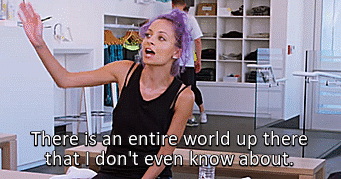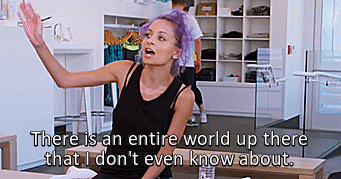Go Where The Problems Are

One of the things that I didn’t like about working at the state health department was sitting at the office all day without much of an opportunity to get outside and work in the field. Whenever there was an outbreak, it was the job of the local health departments to send people out to do the investigations. We would just kind of sit at the office and wait for the information to flow in so we could advice the people in the field on what to do.
That wasn’t always the case, though. I took a more active role in investigating outbreaks of Legionnaires’ Disease or influenza. One time, we got a report from our colleagues in DC that a group of students had fallen ill while on a field trip to the museums there. The students were from different places around the world, and they were in DC for some sort of leadership conference. They were staying at a hotel complex right over the line in Maryland, so it fell on us to follow-up on what was going on.
Because they were international students, CDC got involved as well. It was the middle of summer here in the United States, but countries in other parts of the globe were in the middle of their influenza seasons. So it wasn’t out of the realm of possibilities that they brought the flu with them. It also wasn’t out of the realm of possibilities that they brought some novel strain of influenza and we could be seeing the beginning of a bigger thing… A bigger, more exciting (for an epidemiologist) thing.
So I jumped at the opportunity to head out to the hotel complex and take samples from the students in order to test them at our state laboratory. When I got there, all of the students were running around with face masks around their necks. Apparently, the organizers of the conference had thought it would help to get the students some face masks. They also thought it was a good idea to go to the local drug store and buy a ton of vitamin C and homeopathic remedies.
Yeah, that’s how we’re all going to be wiped out in the next big, deadly pandemic. We’re going to be wiped out because someone will try to contain it with homeopathy and vitamin C.
Anyway, I recommended to the organizers that they stop distributing the masks and instead begin to cohort the sick students together in rooms, keeping them away from the healthy ones. By then, though, the cat was out of the hat (or the horse out of the barn or whatever). I was sure that everyone had been exposed. After all, the sick kids were trying to join their peers in playing sports, and the kids who were okay were checking in on their sick friends in the conference room set up to take throat swab specimens and hand out vitamins and fever reducers.
As all that was going on, I’d check in with the state and CDC on what I was doing and what I was seeing. We kind of agreed that containment was not possible because the kids had been all over DC. If the tests showed some really bad strain of influenza, we’d worry about it then. But most of the kids were okay, except for some high fevers and sore throats. They were not in any way too sick to continue to be kids, which was a good sign.
As it turns out, all of the kids in the conference, a couple of hundred of them, ended up coming down with the flu. It was a Type B influenza strain that was not included in the southern hemisphere’s vaccine that year. It would be included in the northern hemisphere’s vaccine later that year, though. I didn’t get sick, but that didn’t stop my then-girlfriend-now-wife from getting mad at me for just rushing in there without much in the way of protection other than a respirator and goggles.
But that’s what I do. I go where the problems are, and I’m kind of dumb when it comes to my personal safety if it means getting the job done. (With a kid on the way, I’ve been reassessing that approach, by the way.) I’ve been going to some of the most dangerous parts of Baltimore because I need to understand what is going on there on many levels before I can fully flesh out my thesis. It’s not like I’ve been going in the middle of the night and flashing gang signs, though. But I am this big Mexican dude and probably do stand out like a sore thumb.
Many of the students at the school of public health don’t have the opportunity to go where the problems are. They don’t understand the microcosm that they’re investigating and, as a result, they end up with projects that draw some interesting conclusions based on the data they have available. For example, a student is lookin into malaria in Africa (and who isn’t?), but she has never been to that part of the world. She admits that she missed a big source of bias in her study because she didn’t know that there were very influential migratory patterns at play. (The people in the town where the data she received was collected travel in mass numbers to and from fertile areas with the agricultural seasons. Thus, making inferences about an area based on the prevalence of malaria is a bit off because those people there could have taken the malaria there from another part of the country where they were working in the previous weeks.)
Then there is another student who is looking into the genetic causes of autism. (It seems that almost everyone doing genetic epidemiology is looking into autism.) By their own admission, they have not had any significant interactions with autistic people. (Or “people with autism,” as they call the human subjects whose data they are working with.) When I pointed out that it would be to their benefit to go chat with an autistic person, they lashed back at me saying that they don’t have time.
No time? Really?
In that case, I think it is very important to see that autism is not a death sentence. It can be severe in its presentation, and people can be incapacitated severely, but it’s not something to fear. Words like “X number of people affected by autism” are kind of not entirely correct. Not every autistic person is “affected” by the way they perceive the world. If anything, I think it is us who are neurotypical who are affected because we take it so personal when someone else doesn’t fit our view of what “normal” is. “Ay, pobrecito,” we say when we don’t know anything about how someone is living with a disability. (I learned not to act that way when I said “pobrecito” [“poor thing“] about some dude who ended up beating me by an hour in running a half marathon… He was missing both legs.)
Unfortunately, that’s how it goes at the school of public health and at many others in all over the world. Data are collected in some place geographically/socially far away and sent to the institutions of higher learning for analysis. Some ambitious, bright young person takes the data and works on it for a project or two under the tutelage of some older, hopefully wiser and brighter professor. Both of them are so busy in getting grant money and publishing their findings that they never worried about going to where the problems are, or even knowing if there is a problem. (Some professors even claim that the data are their data, but I won’t get into that now.)

On top of all the other advice that I give to students on what to do with their degrees once they start looking for jobs, I tell them to go where the problems are. It’s something that former Dean Al Sommer states in his book of advice to public health professionals. If they have an interest in rural health, go to a rural health department, or to a state health department where they deal with mostly rural issues. If they are interested in dealing with urban health, go to one of the big cities. And I encourage them to go out and get to know the people they will be serving. Like Sherlock said, “I need to get to know the place again, breathe it in, feel every quiver of its beating heart.”
Once you understand where you want to work and why, you’ll do your job that much better. Data becomes people, and you care a whole more about the outcome of your analyses when you realize the true impact of what you do. So don’t lose sight of where the problems are and go there. Take lots of pictures. Wear a helmet. Drop me a line once in a while.